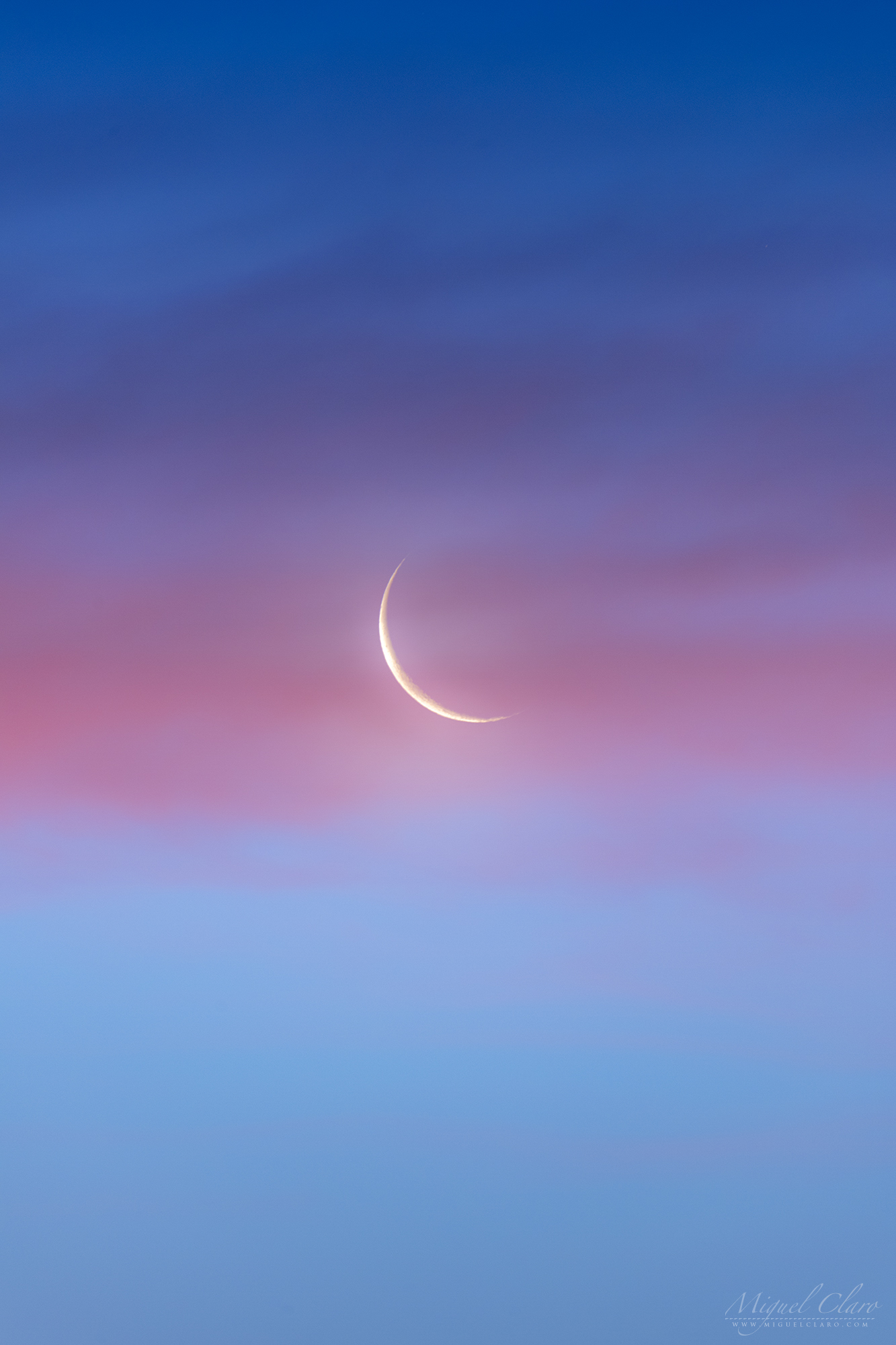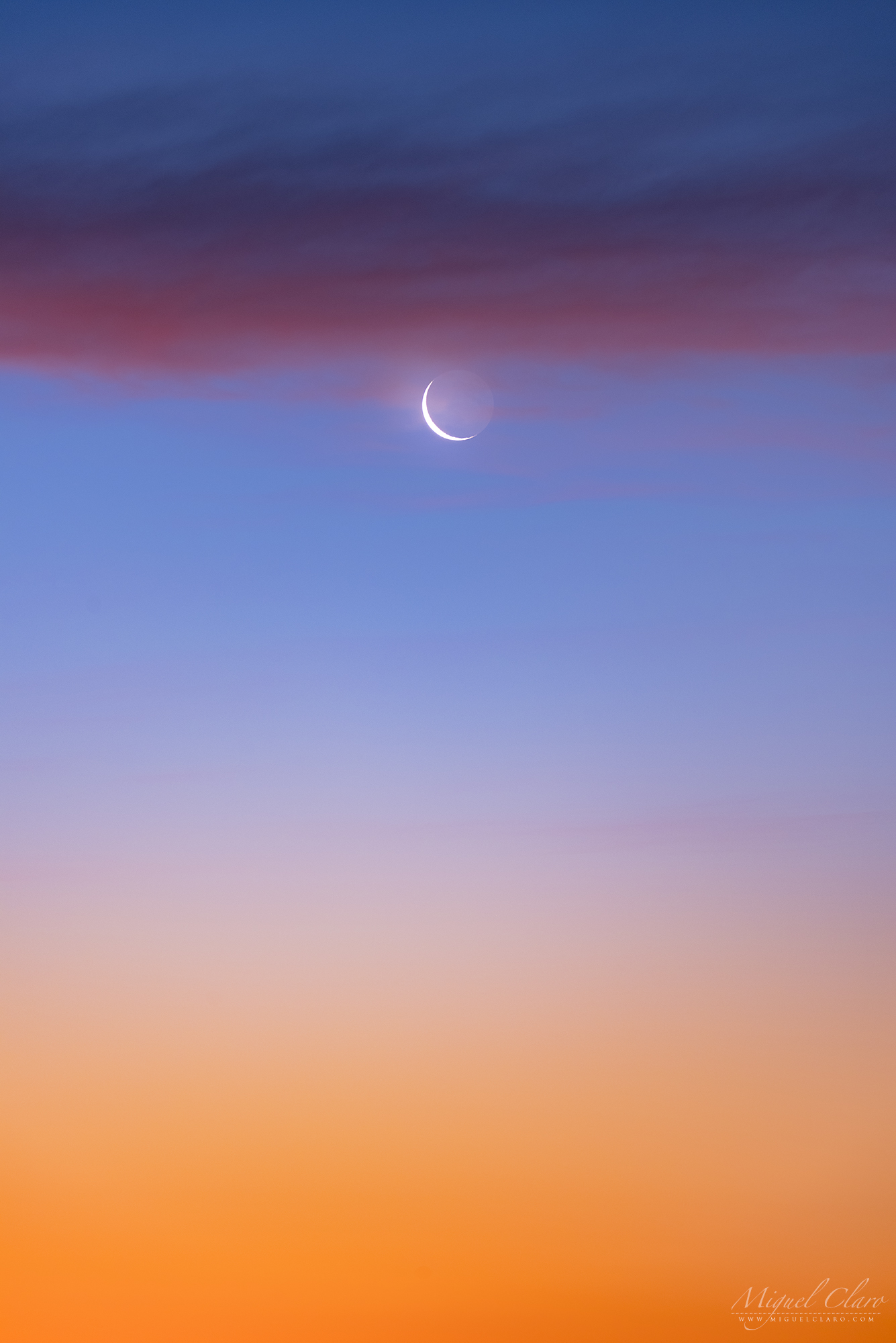Pink Clouds Adorn Crescent Moon in Gorgeous Photo

Miguel Claro is a professional photographer, author and science communicator based in Lisbon, Portugal, who creates spectacular images of the night sky. As a European Southern Observatory photo ambassador, a member of The World At Night and the official astrophotographer of the Dark Sky Alqueva Reserve, he specializes in astronomical skyscapes that connect Earth and the night sky. Join Miguel here as he takes us through his photograph "A Dreaming Waning Crescent Moon."
A waning crescent moonrises at dawn against the glow of twilight and behind a pink band of clouds, just few minutes before sunrise.
Captured above the village of Monsaraz and Lake Alqueva in Portugal's Dark Sky Alqueva Reserve on Feb. 13, these photos show the moon's disk only 6 percent illuminated by the sun. At the time, the moon was just two days away from reaching its "new" phase, at which point this shrinking sliver of moonlight disappeared from the night sky. [Infographic: Earth's Moon Phases]

The pink cloud band in this view looks a lot like an atmospheric phenomenon known as the "Belt of Venus," which is caused by sunlight scattering through dust particles high up in the Earth's atmosphere. While the pink cloud in this photo has nothing to do with that phenomenon or the planet Venus, this colorful view of the crescent moon reminds us that Venus has very similar phases to the moon's, which can be seen through a telescope from Earth.
Venus can reach its greatest apparent magnitude of -4.6, making it the brightest object in the celestial sphere after the moon. When Venus is approaching Earth while orbiting the sun, our neighboring planet appears larger but narrows to a thin crescent shape, a similar but inverted result of this waning crescent moon.
Editor's note: If you captured an amazing astronomy photo and would like to share it with Space.com for a story or gallery, send images and comments to Managing Editor Tariq Malik at spacephotos@space.com.
To see more of Claro's amazing astrophotography, visit his website www.miguelclaro.com. Follow us @Spacedotcom, Facebook and Google+. Original article on Space.com.
Get the Space.com Newsletter
Breaking space news, the latest updates on rocket launches, skywatching events and more!
Join our Space Forums to keep talking space on the latest missions, night sky and more! And if you have a news tip, correction or comment, let us know at: community@space.com.









